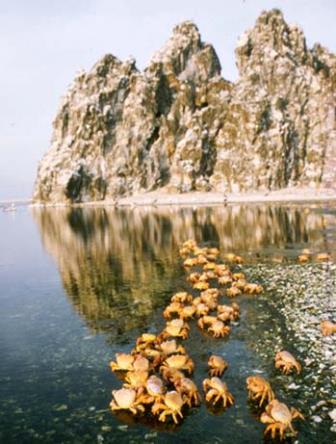The tragic temptations of Clipperton Island

Hundreds of miles south of the tip of Baja lies a small island. Just outside the boundaries of Mexican waters, the shallow ring of land has been disputed through history. Originally it was discovered by Magellan in 1521 but the name comes from an English pirate who, rumor has it, hid treasure on the atoll after he led a mutiny against William Dampier in 1704.
What’s there at first glance does little to inspire ownership. Still the flags flying there have changed over the centuries. Spain, France, England, America and Mexico have laid claim to the thin, arcing atoll hundreds of miles away from the Baja Peninsula. The island’s remoteness has left it prey to the unscrupulous as well as the scientific, to entrepreneurs and scuba divers, but the mystery of its allure depends on the eye of the beholder.
It’s a tropical island, but don’t think pristine beaches and balmy breezes. Rain pelts the nearly flat land from May to October and the rest of the year it reeks of ammonia, an odorous remnant of the guano once mined there. The atoll rings a sealed, natural lagoon but the water is unreliable. The surrounding sea is full of sharks, which are there to feed on smaller fish, but more of that to come.
Many different creatures have made it home at one point or another. The top survivors are the nasty little red crabs that scuttle in and out of sandy lairs. They look appetizing but the meat is tainted to the point of being poisonous.

Clipperton’s buried treasure has never been discovered or at least reported. The first scientific expedition was led by Frenchman, M. Borage, who lived on the island for several months. Other nations have coveted its strategic location. The four top contenders have spared over the one natural resource, guano. The nitrogen rich bird (seal and bat) poop was a marketable commodity elsewhere.
It was the British who built a community on the island with houses, imported soil and planted palms. However the alluring guano didn’t do well in the market and they soon abandoned the operation.
Mexico had enough with foreign powers so close to their shore and in 1910, sent 13 soldiers whose families and servants followed, to found a small village on the island. They were dependent on shipments of supplies from the mainland. All went relatively well until on bad report that everyone there had died, the government stopped transports.
The island commander, Arnaud, was reluctant to send their one boat to the mainland as there wasn’t enough fuel for the journey. Left to their own resources the residents slowly succumbed to malnourishment and vitamin deficiency. A disastrous attempt to reach a passing ship left the women and children huddling in one house as a hurricane passed. After the storm they discovered the rest of their homes had been leveled.
The lighthouse keeper, a reclusive African named Alvarez, took advantage of their plight. He through all arms except his rifle into the lagoon and declared himself King of the island. What followed was a torment of beatings and rapes, even killings for the noncompliant, over a tortuous two years.
Finally three women devised a plan. They ambushed the mad Alvarez outside his hut. While one distracted him, another grabbed a hammer from his room and he was dispatched quickly.
The finale flows like a scene from a harrowing Hollywood movie.
Once Alvarez was dead, the women spied something they hadn’t seen in several years, a ship approaching the island. It was a U.S. Army vessel, the Yorktown, which was patrolling the West Coast for German U-boats, and it attempted unsuccessfully to send a boat to shore. Devastated, the women talked about shooting each other or throwing themselves into the lagoon but the Yorktown persevered, circled the island and finally was successful in landing a boat.
Three women and eight children were rescued. Alvarez’ body was left for the crabs. Clipperton was again left alone.
Since that fateful rescue, scientists have studied the atoll, Jacques Cousteau explored the rich waters surrounding the space and a few shipwrecks have made updating the lighthouse signal a cyclical repair. One footnote: The waters are indeed rich with sea life, as Costeau noted, and not just sharks. A recent license from France lured an investor to launch a tuna harvesting fleet in the area. However, the remote island, the rigors of shipping over long roads, and border issues has closed yet another Clipperton endeavor.
The island scarcely notices. The crabs flourish as they have for eons in the pallid waters and burrow to keep out of the wind.
Photo 1: By Shannon Rankin, NOAA National Marine Fisheries Service, Southwest Fisheries Science Center (SWFSC) [Public domain], via Wikimedia Commons
Photo 2: Clipperton Crabs, Courtesy of Cabrillo College expedition

0 comments